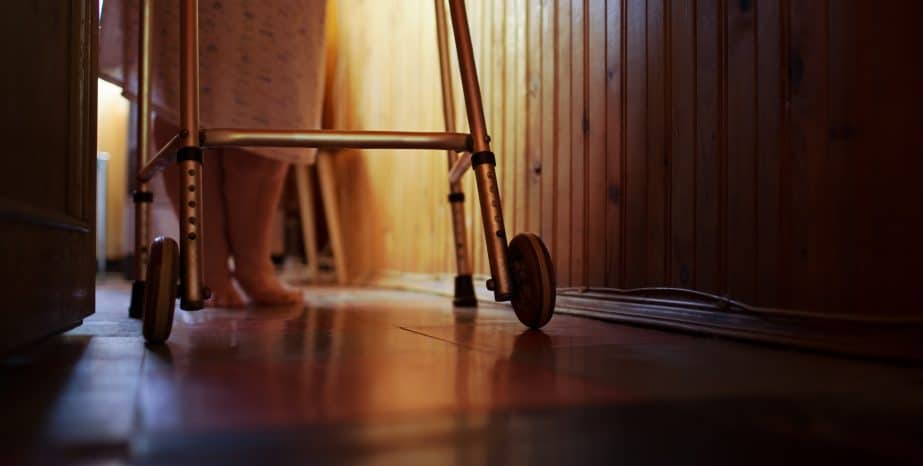
FAQs About Nursing Home Falls
Falls have always been a serious problem in long-term care facilities, but they might be even more serious today. Because of the exploding elderly population, many nursing homes are in a near-constant state of repair, expansion, and renovation. Construction areas are dangerous for anyone, and they are especially dangerous in nursing homes.
Additionally, many older nursing home residents are in overall poor health. So, when these people fall, their injuries are often very serious. And, many of these victims never fully recover. In fact, a majority of elderly fall victims cannot live independently again after they fall.
The medical bills and lifestyle changes associated with elderly falls are incredibly high. Fortunately, a Los Angeles personal injury attorney can normally obtain financial compensation in these cases. However, these claims are quite complex, and many victims and their families have lots of questions.
Why Are Falls So Common in Nursing Homes?
Many older people struggle with vision conditions, such as Age-related Macular Degeneration. AMD is the accumulation of tiny fat deposits around the eyes. So, this condition impairs straight-ahead vision.
Most people can see fall hazards, like liquid on the floor or a large sidewalk crack. But older people might be unable to see these hazards, especially if the light is poor.
Additionally, many older people are unable to step around these hazards, because they have gait disorders. This condition also transforms everyday issues, such as a loose stairway mat, into serious fall hazards. In short, when many older people stumble, they usually fall.
Who is Responsible for Fall-Related Medical Bills?
Care center owners are usually financially responsible for damages. Frequently, this facility owner is an out-of-state holding company or corporation. That’s one reason these cases are so complex.
California law recently changed in this area. To determine if the owner had a legal duty, the judge must consider a number of factors, such as:
- Property location
- Likelihood of harm
- Probable seriousness of harm
- Ease or difficulty of preventing such harm
- Defendant’s control over the premises, and
- Defendant’s actual or constructive knowledge of the hazard.
Most of these factors are quite straightforward, and we’ll look at knowledge of the hazard below. Also, with the possible exception of control over the premises, most of these factors point towards a high duty of care, whether the victim was a nursing home resident or a nursing home visitor.
How Does a Los Angeles Personal Injury Lawyer Build a Case?
Actual knowledge means, well, actual knowledge. Common smoking guns include restroom cleaning reports and paperwork about repair or construction projects. These items usually surface during discovery. In this lawsuit phase, the two sides exchange information about their claims and defenses. During this court-supervised process, landowners generally have a legal responsibility to put all their cards on the table.
Constructive knowledge (should have known) is different. To evaluate circumstantial evidence on this point, most courts use the time-notice rule, which comes from Anjou v. Boston Elevated Railway Company, a classic injury case from 1911.
Ms. Anjou was at a busy train station when she slipped and fell on a banana peel. Witnesses said the peel was black and gritty. She sued the property owner, which claimed it did not know about the hazard.
The court disagreed, due to the peel’s color. Since the peel was black, it had probably been on the floor for a while and someone should have picked it up, the court reasoned. However, if the peel had been yellow, it had probably just fallen, so the owner couldn’t have known about it.
Cause, or a direct connection between the hazard and the injury, is an essential element of a negligence case. Sometimes, this element is hard to prove in fall injury cases. Frequently, the victim was the only witness, and the victim’s recollection might be fuzzy.
Fortunately, California has a very broad res ipsa loquitur rule. If the owner controlled the premises and the injury is normally accidental, negligence is presumed.
Strong cases built on solid evidence help Los Angeles personal injury attorneys overcome some common insurance company defenses, such as lack of proof and the open and obvious doctrine. Under the O&O loophole, landowners might not be liable for fall injuries if the hazard was open and obvious. However, this doctrine does not always apply to nursing home falls, as outlined above. And, the doctrine is only a limited defense, in most cases.
Nursing home fall claims are rather complex. For a free consultation with an experienced personal injury attorney in Los Angeles, contact the Law Offices of Eslamboly Hakim. We do not charge upfront legal fees in injury cases.
Sharona Hakim
Sharona Eslamboly Hakim, Esq. is a successful personal injury attorney and the principal of the Law Offices of Eslamboly Hakim firm in Beverly Hills, California.








